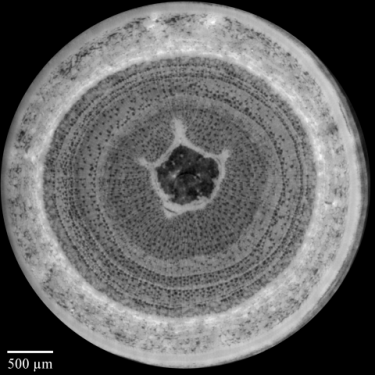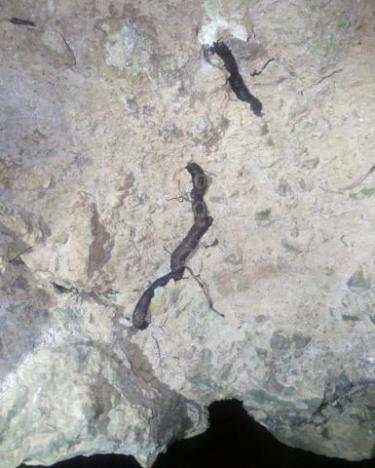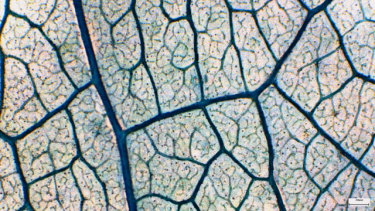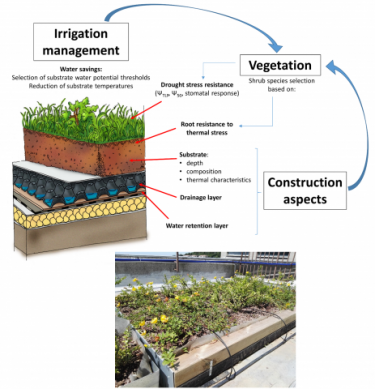The research projects coordinated by Prof. Nardini span from basic understanding of plant physiological processes related to water uptake and transport, to applied research in the fields of forest ecology. Functional traits assuring efficiency and safety to plant water transport systems are studied with a combination of biophysical, molecular and ecological tools. Controlled experiments and field surveys are used to investigate how plant water balance is affected by different environmental parameters, and how plants cope with reductions in water availability. Non-invasive methodologies such as X-ray Microtomography (Micro-CT) are used to validate and couple more classical approaches to study plant hydraulics.

1- 2D reconstruction of a Black poplar stem transverse section obtained with Synchrotron-based X-ray microcomputed tomography
Main lines of research
1- Mechanisms of drought-induced tree mortality: from physiological bases to ecological consequences
Ongoing climate warming is leading to increased frequency and intensity of heat and drought waves in several areas of the globe. One of the consequences of these extreme climatic events is tree die-off in forests. Tree mortality implies a reduction of net primary productivity and a conversion of forest ecosystems from net carbon sinks to net carbon sources, with impacts on climate at a regional scale, modifications of competitive processes, and consequences on ecosystem biodiversity and stability. We currently investigate the physiological mechanisms linking drought to tree die-off. Prolonged/intense drought causes a progressive decrease of plant water potential leading to xylem embolism and blockage of root-to-leaf water transport, plant desiccation and death ('hydraulic failure'). On the other hand, stomatal closure to prevent xylem embolism causes a halt of photosynthesis leading to progressive depletions of reserves on non-structural carbohydrates and impairment of plant metabolism ('carbon starvation'). We seek for connections between plant water and carbon metabolism, and in particular to the role of carbon depletion into the impairment of the plants' ability to recover from drought stress via energy-dependent xylem refilling. We are currently investigating the roles of hydraulic failure and carbon starvation in tree decline and recovery capability, as a function of stress intensity and duration. We also aim at quantifying the species-specific critical stress levels inducing increased mortality risk and eventual increase of vulnerability to successive drought events.
2- The rock matrix as water reserve for plants during drought periods
Large portions of the terrestrial habitats are characterized by shallow soils overlying more or less compact bedrock and the Classical Karst represents a clear example. Water available in rocks can explain spatial variations in plant water status and mortality patterns in rock-dominated habitats during drought events. Moreover, rocks with higher primary porosity are able to store large volumes of water that can be exploited by plants, especially during drought events. We are interested to characterize and quantify the rock-soil-root water transfer and to understand which conditions would allow for water release from the rock and its absorption by the roots.

2- Roots reaching the roof of a karstic cave through bedrock fissures
3- The hydraulic architecture of the Angiosperm leaf
The intricate and delicate network of leaf veins is a wonderful example of evolutionary engineering, and leaf vasculature has always fascinated scientists, as well as artists. From a functional viewpoint, this complex plumbing system is designed to efficiently deliver water to photosynthetic cells, thus replacing the huge amount of water that plants lose to the atmosphere during the transpiration process. In fact, large water losses are unavoidably coupled to stomatal opening and CO2 diffusion from the atmosphere into the leaf interior, which is crucial to fuel photosynthetic processes.
We investigate the structure/function relationships between the architecture of the vein system and leaf hydraulics. We are particularly interested in the responses of leaf hydraulic conductance to different environmental factors, and specifically to drought stress. We analyze the relationships between leaf hydraulic efficiency and safety, investigating basic mechanisms underlying the loss of leaf hydraulic conductance under stress conditions, and the processes allowing recovery upon stress release. We are also very interested in the trade-offs between leaf construction costs, hydraulic safety and efficiency, and the ecological consequences in terms of plants competitiveness and distribution in different habitats, ranging from local to regional and global spatial scales.
We use anatomical, biophysical and molecular tools to investigate leaf hydraulics, and we also apply basic knowledge to the development of screening criteria to identify drought-resistant genotypes of herbaceous and woody plants.

4- Ecophysiological approaches to improve plant survival in extensive green roof systems
Green roof systems belong to the so called “Nature-Based solutions” as an instrument of building and urban sustainability aimed at mitigating and adapting to climate change, especially in urban areas. Their implementation in regions prone to summer heat waves and prolonged drought periods represents a challenge for plant survival and for a sustainable irrigation management. Thanks to the cooperation with leading green roof companies, we apply the knowledge and methodologies of plant ecophysiology to improve vegetation water status in extensive green roofs, i.e. those with shallow (<15 cm) substrate depths. Our aims are the selection of drought and heat tolerant species, substrate temperature reduction and water consumption reduction for irrigation.





